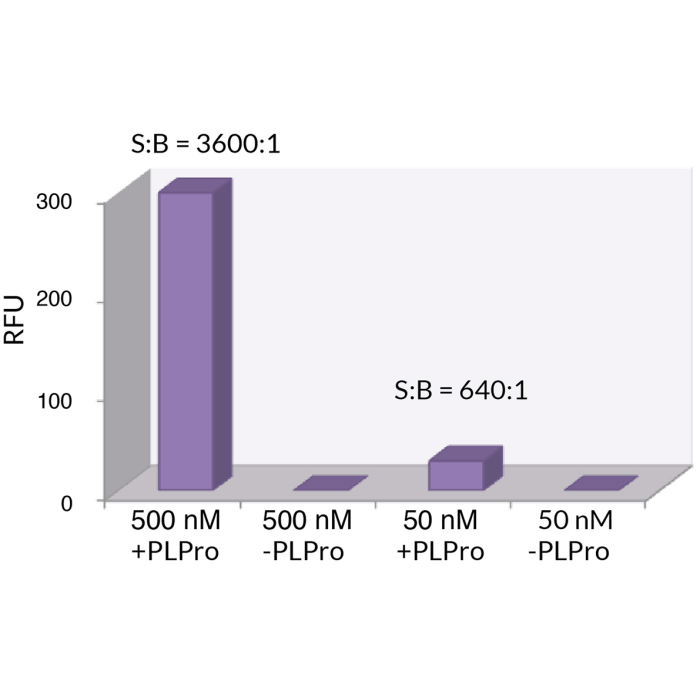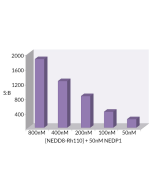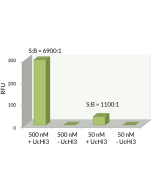Cookie Policy: This site uses cookies to improve your experience. You can find out more about our use of cookies in our Privacy Policy. By continuing to browse this site you agree to our use of cookies.
SouthBayBio
ISG15 (human) (rec.) (Rhodamine 110)

| Product Details | |
|---|---|
| Synonyms | ISG15 Ubiquitin-like Modifier; G1P2; IFI15; IP17; UCRP |
| Product Type | Protein |
| Properties | |
| Source/Host | E. coli |
| Sequence | Human ISG15 (aa1-157) (Accession Nr. P05161) conjugated at the C-terminus to a quenched Rhodamine 110 dye. |
| Crossreactivity | Human |
| Application | Protein-based substrate. Typical working concentration range is 50-500nM. Hydrolysis of the conjugate results in fluorescence observable by excitation at 485nm and emission at 535nm. |
| Label/Conjugates | Rhodamine |
| MW | ~18kDa |
| Purity | ≥97% (LCMS) |
| Concentration | Lot dependent. |
| Accession Number | P05161 |
| Formulation | Liquid. In 50mM MES pH 6.0, 100mM sodium chloride, 10% glycerol. |
| Other Product Data |
Click here for a Typical Lot-specific Product Datasheet from the Original Manufacturer |
| Declaration | Manufactured by South Bay Bio. |
| Shipping and Handling | |
| Shipping | DRY ICE |
| Short Term Storage | -80°C |
| Long Term Storage | -80°C |
| Handling Advice |
Aliquot to avoid freeze/thaw cycles. Protect from light. |
| Use/Stability | Stable for at least 1 year after receipt when stored at -80°C. |
| Documents | |
| Product Specification Sheet | |
| Datasheet |
 Download PDF Download PDF |
ISG15 (Interferon Stimulated Gene, 15kDa) is a ubiquitin-like modifier which initiates innate immune response by activating RIG-I signaling, stimulating NK-cell proliferation, inhibiting viral budding and acting as an IFNγ-inducing cytokine. ISG15 contains two tandem ubiquitin homology domains and is cross-reactive with α-Ubiquitin antibodies. Conjugation of ISG15 to a substrate protein occurs through a ubiquitin like cascade via an E1 (UBE1L), E2 (UbcH8/UBE2L6) and E3 (not yet discovered.) Deconjugation normally occurs via UBP43 (USP18), however there are several viral proteases that are able to hydrolyze ISG15 conjugates in order to evade immune response. These include the OTU-containing protease of Crimean-Congo Hemorrhagic Fever nairovirus and the Papain-Like Protease (PLPro) of the SARS coronavirus.







